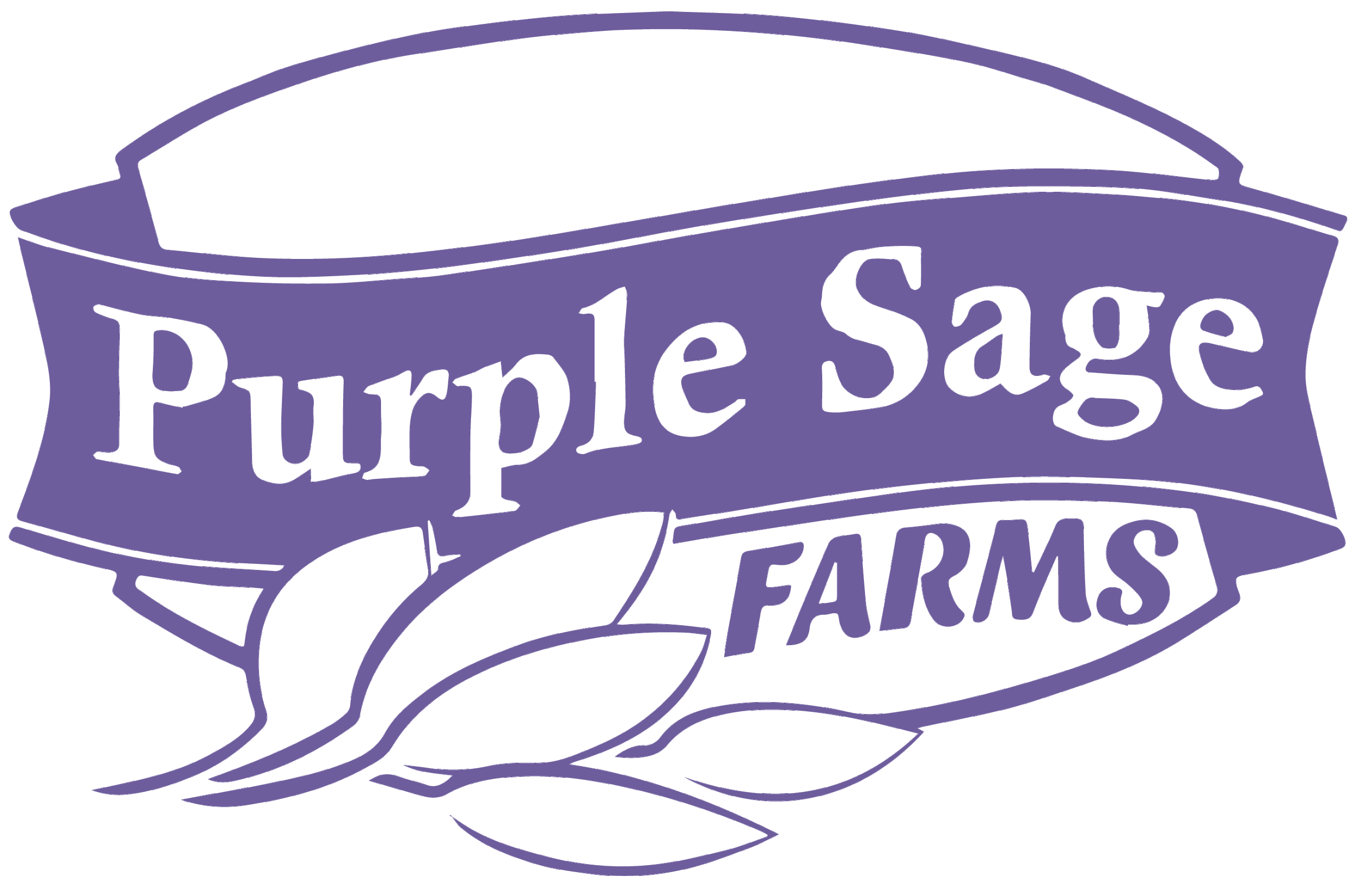Peppers for Maximum Flavor and Heat
By Mike and Jackie Sommer and Photos by Arlie Sommer
Tropical peppers like habaneros (above) are grown in Purple Sage Farms greenhouses. Hardier variety peppers like Sweet Italian are grown outdoors.
Pepper season is one of our favorite times of year on the farm! We get so excited to harvest the ripe peppers after all of the hard work to get them established for the season.
It all starts over the winter months. We purchase seeds from various organic growers and suppliers and plan our crop layouts. Depending on what seeds we can source, we aren’t always able to grow every variety, every year. Seeds are planted in January in our germination room since the growing season in Idaho is not long enough for the pepper life cycle.
Once the threat of frost has passed in the spring, we plant the seedlings outside or in our greenhouses. We adhere to a strict crop rotation method, planting the peppers into a different bed each season. This helps with pests, weeds, and soil health. We irrigate with drip tape and trellis some varieties to support branches weighed down with heavy loads of fruit. We make sure they get extra calcium by adding soil amendments and use a foliar fertilizer (all approved for organic farming).
Tropical varieties (like Ghost peppers, Habanero peppers, etc.) are grown in a greenhouse. Annual peppers are grown outdoors. They are hardy pepper plants that can deal with the stresses of life outdoors in Idaho—heat and cold, wind, lots of sun, you name it!
Peak harvest for peppers happens in September and October. We harvest all of the fruits before the fall frost. Most of the peppers we harvest, then dry and store for selling throughout the year. We also sell some of the peppers fresh at the farmers market or to local restaurants and grocery stores.
Peppers’ hotness is rated using the Scoville Scale. This scale demonstrates the degree of pungency of fruits in the genus Capsicum, which includes peppers and chilies. The test methodology of the Scoville Scale recognizes the capsaicinoids responsible for the heat, determines the concentration, and assigns the appropriate Scoville Heat Unit (SHU). The heat of any single pepper can vary depending on growing conditions.
Pictured below are some of the most notable peppers we grow. They are listed in order, from peppers with no heat to the most fiery.
Sweet Italian Peppers—no heat
Strong flavor, tender, medium-thick skin, thick flesh, good for roasting, drying, preserving, or fresh eating. Much better than a bell pepper! Try them fermented for a delicious fall pickle.
Habanadas—no heat
Strong habanero flavor, thin flesh, thick skin, good for eating fresh or frying in a pan
Anaheims—500 to 1,500 SHU
Mild heat, thick skin, medium-thick flesh, good for roasting (remove skin), good for drying
Poblanos—1,000 to1,500 SHU
Mild heat, thick skin, medium-thick flesh, good for drying, roasting, fresh eating, strong pepper flavor. This pepper is great for chili rellenos or stuffed peppers (with rice, veggies, beans, meat). The “ancho” is a dried poblano chile.
Jalapeños—2,500 and 8,000 SHU
Mild pepper, thick flesh, use in dishes to give a little spice
Serranos—10,000 to 23,000 SHU
Smokier flavor than the jalapeño and a little spicier. Very good in salsas or hot sauces for a medium heat with more robust flavor
Lemon Drops—30,000 SHU
Bright yellow color, unique and strong lemony, floral, perfume flavor, at first, then heat begins to hit and linger, delicious in fresh salsas or ceviche, great for pickling
Cayennes—30,000 to 50,000 SHU
Nice hot pepper with flavor to match, great for Indian or Thai cooking—think curries, pad Thai, making pepper flakes for sprinkling on food
Thai Chilies—50,000 to 100,000 SHU
We grow a variety known as Bird’s Eye Thai Chile. It’s very tiny and spicy—an authentic chile for Thai cuisine, curries, spicy chili paste and noodle dishes.
Habaneros—100,000 to 350,000 SHU
Very distinctive flavor, hot heat that lasts. Try our hot sauce recipe.
Scotch Bonnets—80,000 to 400,000 SHU
Roasted, slightly sweet flavor and juicy. Traditionally used in West African and Caribbean traditional cooking.
Ghost Peppers—800,000 to 1,041,427 SHU
Best for making hot sauce, use fresh or dried. Good for an extreme heat-seeker hot sauce.
Carolina Reapers—1,400,000 to 2,200,000 SHU
Best for making hot sauce, fresh or dried, not a lot of flavor but lots and lots and lots of heat!














